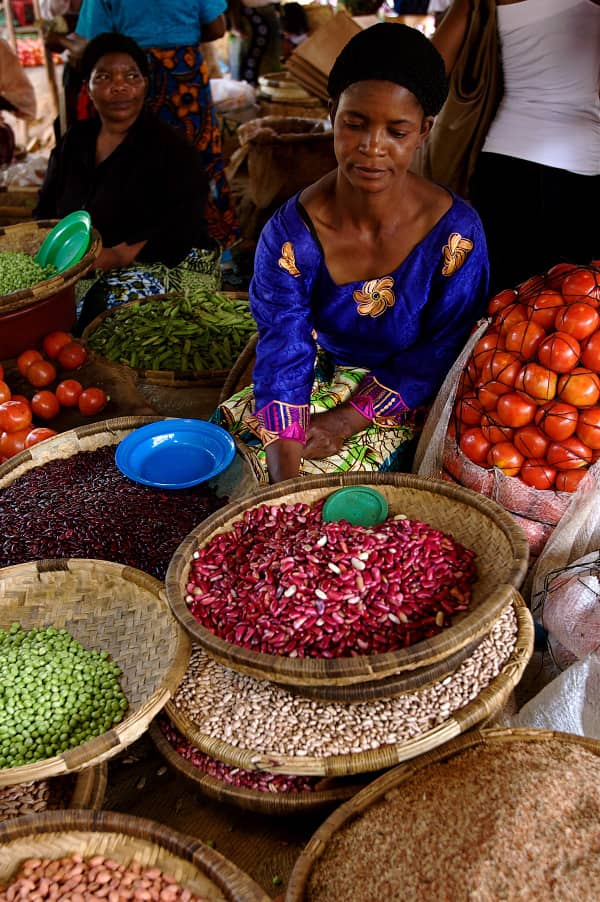Food Security and Hunger Eradication: The Role of Agriculture

Food security is a critical global challenge that focuses on ensuring all people have access to sufficient, safe, and nutritious food to meet their dietary needs for a healthy and active life. Hunger eradication is a key goal in this regard, and agriculture plays a central role in achieving both food security and the elimination of hunger, especially in developing nations where a large percentage of the population relies on agriculture for their livelihoods.
Agriculture is known to be the primary source of food production, directly affecting the availability, accessibility, and affordability of food. As the global population is projected to reach 9.7 billion by 2050, the pressure on agricultural systems to produce enough food is immense. Ensuring food security, especially in regions prone to food shortages, requires strengthening agricultural productivity, developing resilient crop varieties, and improving the distribution of food.
Key Agricultural Practices for Food Security
1. Sustainable Farming Practices: The need for sustainable agricultural practices has become more apparent, as soil degradation, deforestation, and water scarcity threaten food production. Sustainable methods, such as crop rotation, agroforestry, organic farming, and conservation agriculture, help preserve the environment while boosting food yields. These practices are vital for smallholder farmers in developing countries, where food insecurity is often highest.
2. Agroecology: Agroecology integrates principles of ecology into agriculture, promoting biodiversity, soil health, and natural resource conservation. It allows farmers to enhance productivity without relying heavily on synthetic inputs, making it a more accessible solution for low-income farmers. By restoring ecosystem functions, agroecology can improve food availability and reduce hunger in vulnerable communities.
3. Irrigation and Water Management: Water scarcity is a significant challenge for agriculture, particularly in arid and semi-arid regions. Efficient irrigation techniques, like drip irrigation, rainwater harvesting, and water recycling, are essential in maximizing agricultural output while conserving water resources. By ensuring consistent and reliable water supply, agricultural productivity can increase, leading to improved food security.
The Role of Agricultural Innovation
The use of technology and innovation in agriculture has the potential to revolutionize food production and distribution. Agricultural innovations include:
– Precision Farming: This technique uses GPS, data analytics, and sensors to monitor soil conditions, crop health, and weather patterns in real-time. Precision farming helps farmers optimize the use of inputs such as water, fertilizers, and pesticides, leading to higher yields and lower environmental impact.
– Genetically Modified Crops (GMOs): GMOs can be engineered to resist pests, tolerate drought, and thrive in poor soil conditions. These crops can play a vital role in ensuring food security in regions with challenging growing conditions by providing more resilient food sources.
– Post-Harvest Technologies: Post-harvest losses are a significant problem, particularly in sub-Saharan Africa, where up to 30% of food produced is lost due to poor storage, transportation, and market access. Improved post-harvest technologies, such as cold storage, better packaging, and efficient transportation networks, can reduce food wastage and increase food availability.
Policy and Governmental Support
Effective policy frameworks are crucial to promoting agricultural development and food security. Governments must prioritize:
– Investment in Rural Infrastructure: Poor infrastructure in rural areas often limits access to markets, agricultural inputs, and technologies. Building roads, irrigation systems, and storage facilities can significantly boost food production and reduce post-harvest losses.
– Access to Credit and Financial Services: Many small-scale farmers face challenges accessing credit, limiting their ability to invest in new technologies, seeds, or fertilizers. Governments and development organizations should expand access to financial services for farmers, helping them invest in their farms and increase food production.
– Agricultural Research and Development: Governments and international bodies should invest in agricultural research to develop high-yield, disease-resistant, and climate-adaptive crop varieties. Research institutions can also focus on developing sustainable practices that reduce environmental impact while increasing productivity.
Addressing Global Hunger
Agriculture alone cannot eradicate hunger; it must be integrated into broader efforts to address the root causes of hunger, such as poverty, conflict, and inequality. However, agriculture remains a powerful tool to combat hunger, particularly when combined with social safety nets, equitable access to resources, and inclusive economic policies.
1. Empowering Women in Agriculture: Women play a crucial role in food production, particularly in rural areas. However, they often have less access to resources like land, credit, and technology. Empowering women through equal access to agricultural resources can significantly improve food security, as women tend to reinvest in their families and communities, amplifying the benefits of agricultural productivity.
2. Conflict and Food Insecurity: Conflict is a major driver of hunger, as it disrupts food production and distribution systems. International efforts to resolve conflicts and promote stability in regions like sub-Saharan Africa and the Middle East are essential to improving food security in these areas.
3. Climate Change Adaptation: Climate change is a major threat to global food security. Rising temperatures, changing precipitation patterns, and more frequent extreme weather events are already affecting agricultural productivity. Farmers, particularly smallholders in developing countries, must be supported in adapting to these changes through access to climate-resilient seeds, weather forecasting tools, and sustainable practices.
Agriculture is at the heart of the global effort to achieve food security and eradicate hunger. Sustainable farming practices, innovative agricultural technologies, and supportive governmental policies are essential to increasing food production and ensuring that everyone has access to adequate and nutritious food. By addressing the underlying issues in agricultural systems, we can move closer to a world where hunger is a thing of the past.
While the path to achieving global food security is complex and multifaceted, the central role of agriculture in feeding the world and reducing hunger is undeniable. By leveraging the power of agricultural innovation and ensuring equitable access to resources, the global community can work together to eradicate hunger and build a more sustainable future for all.
